 We all have heard about Creatine. Some people have a misconception that Creatine is a steroid-like supplement with adverse health effects. To what credibility are these claims? Can Creatine give you that extra boost to get you past a plateau? What is it, where does it come from, and how does it help you? Let’s talk about Creatine.
We all have heard about Creatine. Some people have a misconception that Creatine is a steroid-like supplement with adverse health effects. To what credibility are these claims? Can Creatine give you that extra boost to get you past a plateau? What is it, where does it come from, and how does it help you? Let’s talk about Creatine.
Creatine is a natural derivative of meat, mostly red meat. Our bodies also make creatine in the pancreas, liver, and kidneys. It is a natural compound, and the average male processes approximately 2 grams of creatine per day. Creatine is used to synthesize ATP, or adrenosine triphosphate. ATP is the power that gives our muscles energy. ATP gives our muscles the power to contract, so it is important to keep a constant influx of ATP in your system.
Like our muscles rebuild our glycogen, we also have to rebuild our ATP reserves. The fastest way to do this is through Creatine Phosphate. Creatine Phosphate is a compound that quickly converts to ATP and helps to replenish these stores. Supplementing with Creatine greatly increases the amount of Creatine Phosphate in our muscles, therefore allowing our ATP reserves to regenerate quickly.
Before going to the shelf and purchasing Creatine, we need to decide which type of Creatine is the best. We once thought that Creatine Monohydrate was the best form of creatine because it is bound to water molecules. However, this form of creatine rapidly turns into creatinine, which is not useable and ends up being secreted through our urine. This is why it takes a lot of Creatine Monohydrate to get very little creatine into your muscles.
However, there is a more efficient solution – Creatine Ethyl Ester. It is the same thing as Creatine Monohydrate, but with an ester attached. These organic compounds make most of the creatine that you consume to be delivered into your muscles, rather than secreted through your urine. If you want to further increase the speed of your creatine uptake, take it post workout and use a simple sugar to give the “insulin spike” effect to ensure proper, prompt delivery.
Ok, so now that we know which form of creatine to supplement with, let us discover the benefits of Creatine. Creatine increases your intramuscular creatine reserves so that your ATP can be quickly refilled. Creatine also increases the amount of glycogen, or energy, storage in your muscles. This means that you muscles will grow fuller and bigger to accommodate for the space needed to hold all of these energy reserves.
Creatine also absorbs water. Unlike Creatine Monohydrate, which can cause the “Creatine Bloat,†Creatine Ethyl Ester only increases water reserves in your muscles. This means that you have more fat-free mass and larger, fuller muscles. Not only does it make your muscles appear larger, but it creates a favorable environment for optimum muscle growth. This means that once you get off of Creatine, you will not lose everything that you gained because you will have gained lean muscle in the process as well.
I guess that the most common question regarding Creatine is its safety. There are lots of short term and long term studies that indicate that there are no adverse effects from creatine supplementation. The only time that you shouldn’t supplement with Creatine is if you have renal disease or dysfunction. This is because creatinine causes your kidney to work a little harder, and an unhealthy kidney could be aggravated. Otherwise, you will be safe.
The biggest health concern with Creatine is the quality of the product. Make sure that you are using a reputable company to get your Creatine from. Higher Power from bodybuiliding.com is a great company to purchase Creatine from.
I hope that you have cleared your concerns about the potential harm of Creatine. I would encourage you to take it to assist your recovery, strength, and muscle growth. However, it is entirely up to you on what you put in your body. Do your best research and make the most sapient decision.
source:blogbytravis.com
